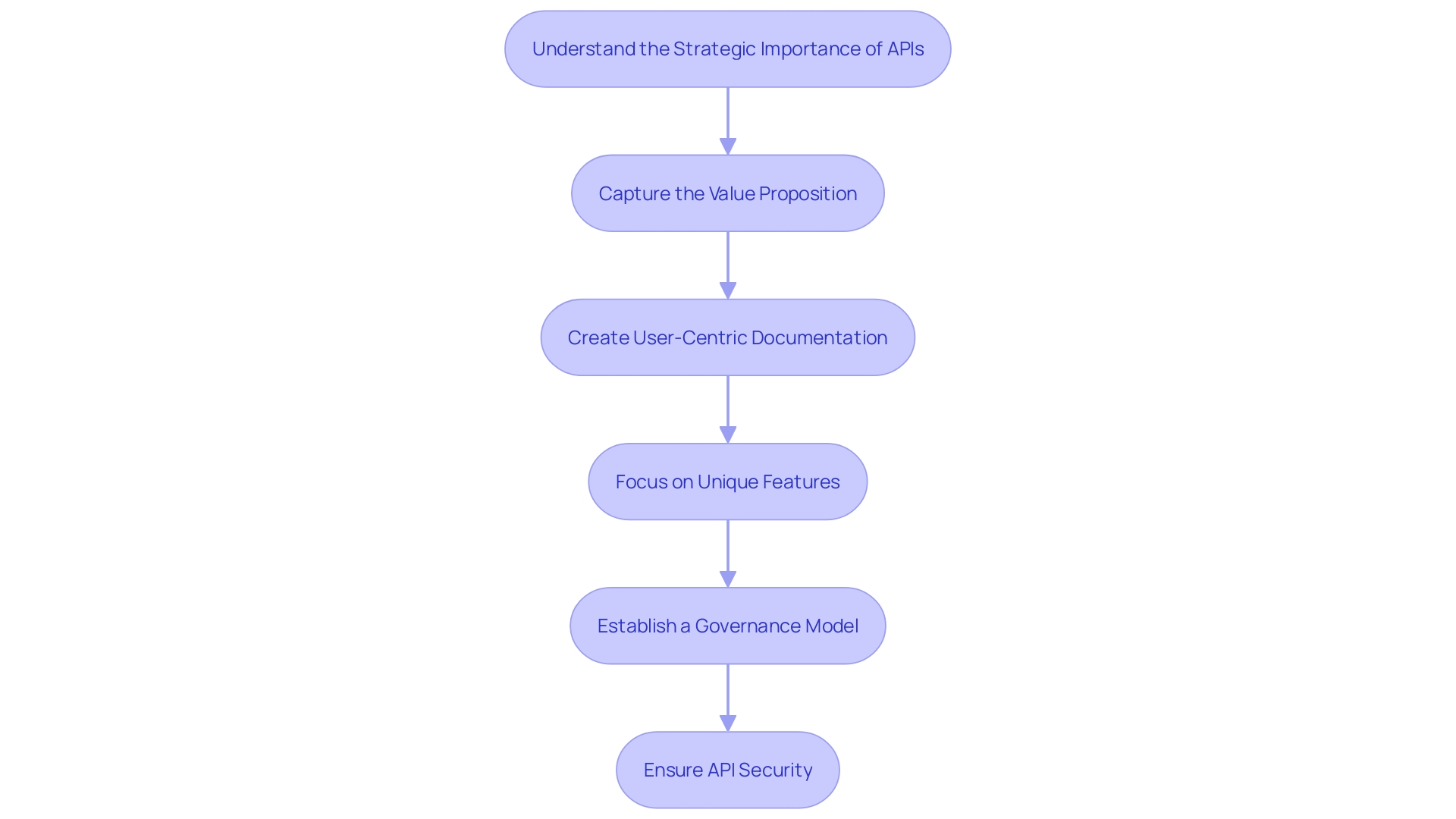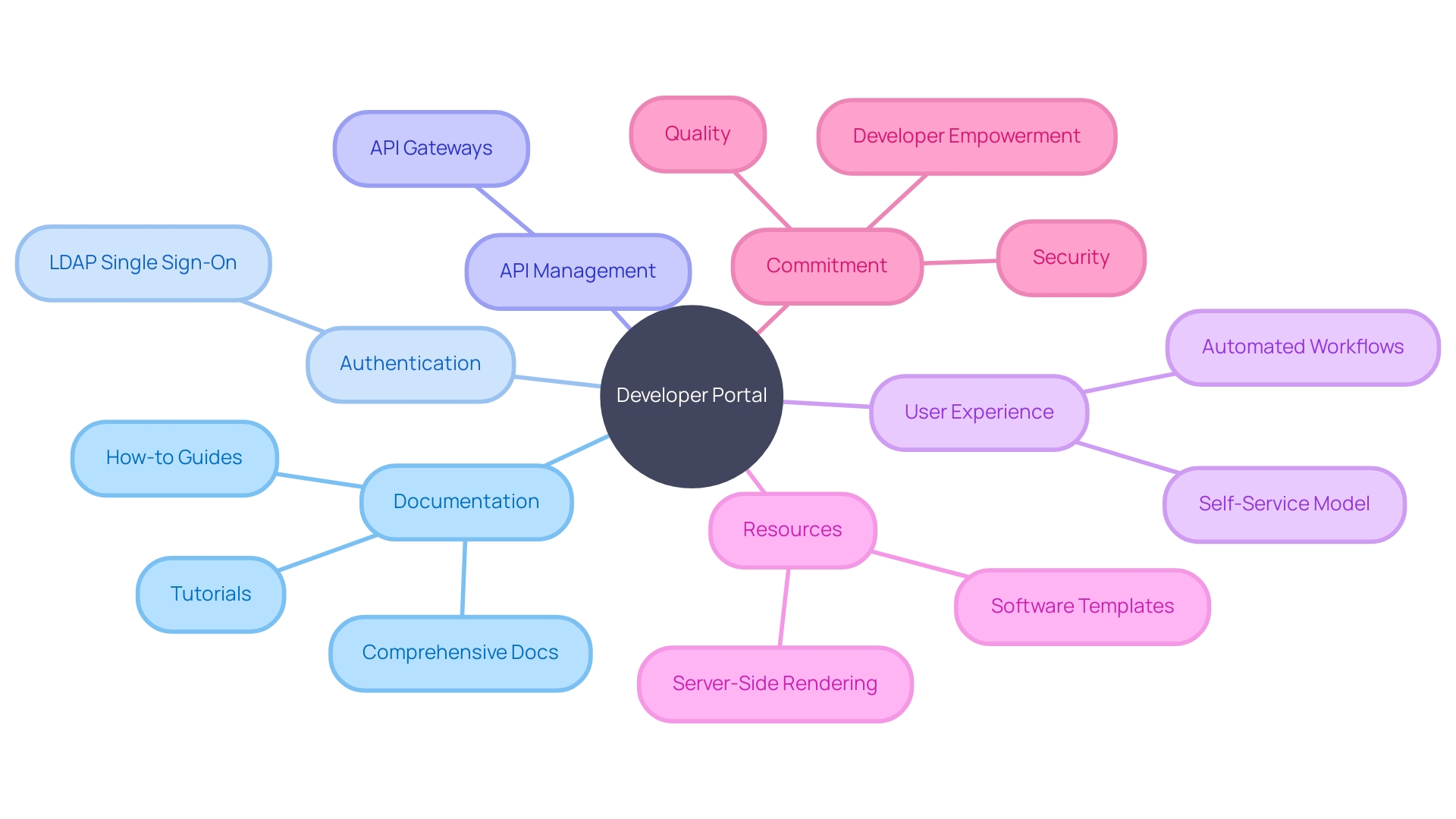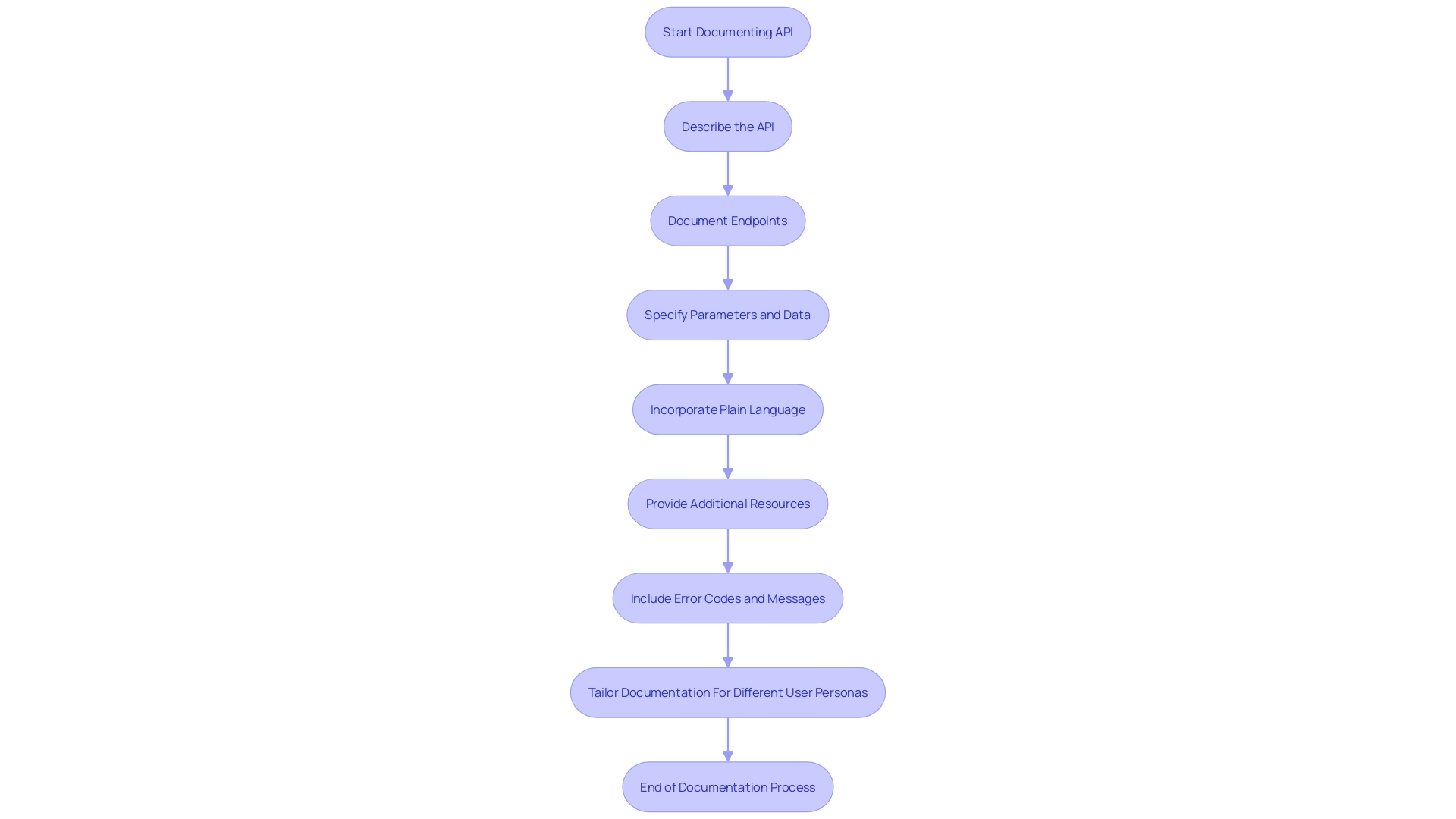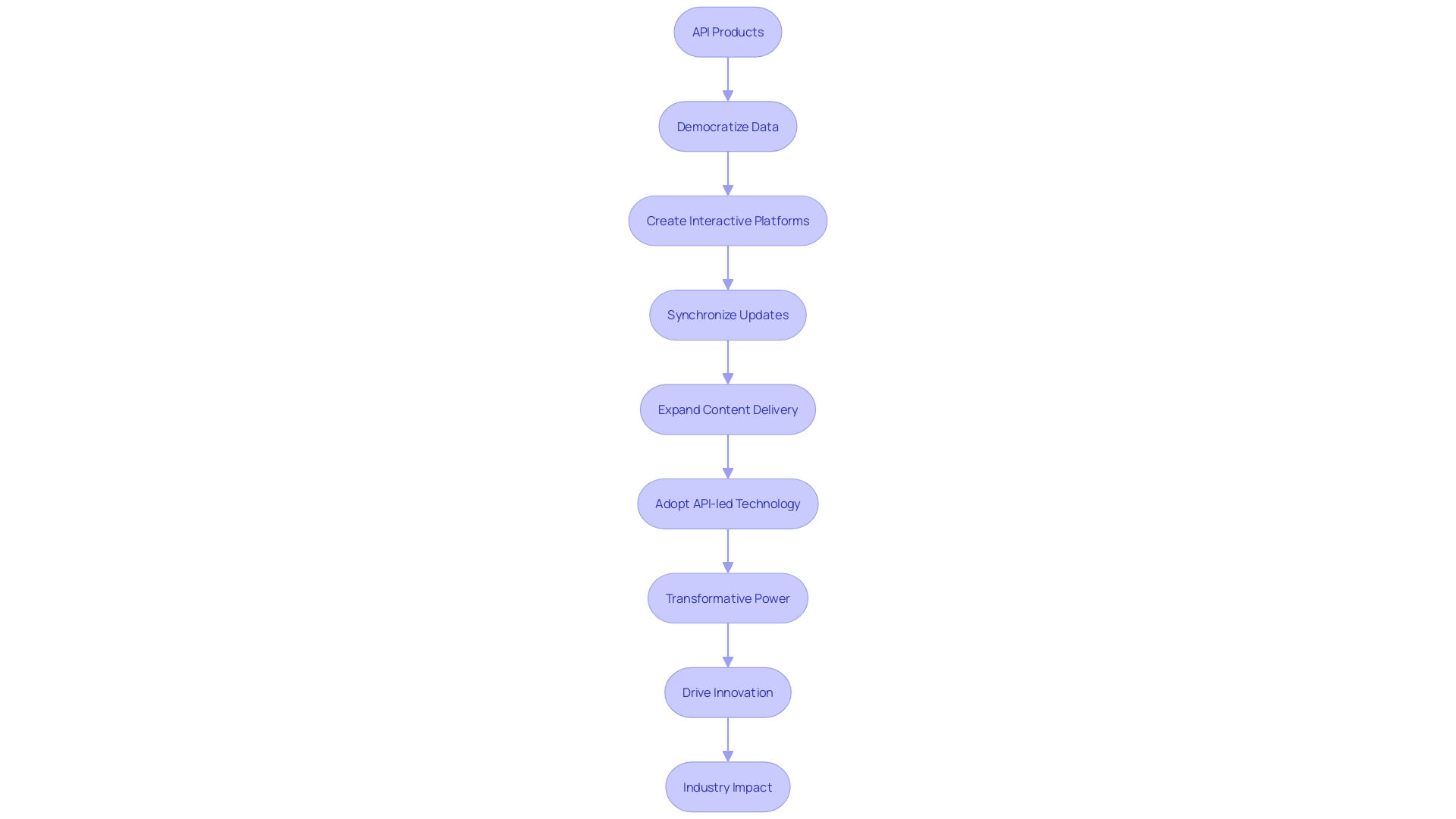Introduction
APIs (application programming interfaces) are the backbone of modern digital exchange, enabling different systems to transfer and manipulate data seamlessly. They are the conduits for business value delivery, enhancing customer experiences and meeting user needs with precision. Recent studies underscore the critical role of APIs, with organizations acknowledging their significance in preventing operational silos.
APIs at the forefront have also highlighted the need for robust API security to protect data privacy. To truly harness the potential of APIs, understanding customer requirements and creating value through API tools is essential. By focusing on needs versus wants, businesses can ensure that their API environment serves its intended purpose effectively and efficiently.
APIs are more than just a technical necessity; they are strategic assets that can propel businesses forward, delight customers, and ensure a competitive edge in the ever-evolving technological landscape.
Understanding API Products
APIs (application programming interfaces) are the backbone of modern digital exchange, enabling different systems to transfer and manipulate data seamlessly. With the strategic use of APIs, companies can open their applications' doors, allowing external developers to craft new and innovative services. These interfaces become the conduits for business value delivery, enhancing customer experiences and meeting user needs with precision.
Recent studies, including those conducted by Vanson Bourne, underscore the critical role of APIs, with 93% of organizations acknowledging their significance in preventing operational silos. Moreover, the research reveals that 97% of respondents see the synergy between APIs and microservices, suggesting a bundled integration approach for peak performance outcomes. Furthermore, with APIs at the forefront, 60% of organizations in the U.S. and Europe have experienced breaches, highlighting the need for robust API security to protect data privacy.
Consider the case of Spotify's Backstage, a platform for building developer portals. It illustrates the technical challenges that can arise with fixed data models and manual data ingestion, leading to inefficiencies and maintenance difficulties. This example reinforces the importance of API governance, as it helps organizations track, update, and justify their APIs' business rationale.
To truly harness the potential of APIs, focus on the 'needs' versus 'wants' of customers is essential. As one expert puts it, understanding customer requirements can lead to building platforms that address multiple needs, rather than just delivering what customers think they want.
For developers, APIs present an opportunity not just for creativity but also for economic gain. By creating value through API tools, developers can step beyond traditional roles and engage in lucrative side projects, enhancing their skills and financial status.
In essence, API products are more than just a technical necessity; they are strategic assets that can propel businesses forward, delight customers, and ensure a competitive edge in the ever-evolving technological landscape.
Setting Up Your API Environment
Establishing a solid API environment is a cornerstone to creating robust API products. To kick things off, selecting the appropriate programming language and framework is crucial. It's akin to choosing the right materials to build a strong foundation.
Additionally, ensuring all dependencies are in place is like having all your tools ready before construction begins.
A case in point is the execShellCommand function implementation in server/utils/execCommand.ts. This function is pivotal for the safe execution of shell commands, illustrating the importance of robust components in your setup. Similarly, when configuring a new endpoint, such as the one for adding applications to PM2 in server/API/apps.post.ts, understanding the HTTP methods like POST is essential for creating resources effectively.
Recent developments like Microsoft Power Platform's environment groups and rules showcase the trend of utilizing managed environments to govern large-scale deployments. This mirrors the need for a well-structured API environment that can cater to various users and their applications.
When dealing with organizational access within your API environment, it's vital to define roles clearly, just as you would delineate permissions within your team, ranging from owners with full access to members with limited access.
Ensuring that your API environment is secure is non-negotiable. A 'secret', such as an API key, should be safeguarded with the utmost care, much like you would protect sensitive personal information. Implementing these with security best practices in mind is as important as the initial setup.
The statistics speak for themselves: APIs fuel the digital world we navigate daily. They are the invisible threads connecting different software components, making our interactions seamless. For instance, consider how a weather app fetches data from various sources to provide real-time updates.
This kind of interoperability is only possible with well-defined and well-implemented APIs.
Finally, as one quote from a seasoned developer emphasizes, it's not just about building things right but building the right things. By focusing on the needs rather than wants, you can ensure that your API environment serves its intended purpose effectively and efficiently.

Creating API Products
Embarking on the development of API products is a pivotal step towards enhancing business value and customer delight. Initially, the focus must be on understanding the strategic importance of APIs to your business model and how they will serve as a unique delivery system for your offerings. Delve into the value proposition from three angles: the users, their needs, and the competitive landscape.
To ensure your API documentation stands out and is immediately useful, it should encapsulate five essential elements. The introduction must captivate potential users, offering a clear view of the benefits and an efficient onboarding process. Consider user personas to tailor the experience from the start.
Each guide or tutorial should be goal-oriented, providing context, prerequisites, and straightforward step-by-step instructions, alongside versioning and last-update details to ensure relevance.
An API's uniqueness is its strength; therefore, begin with the distinctive features—those that differentiate your API in the market. As Jason Fried puts it, 'Build the weird thing first.' Users are drawn to innovation and will request more conventional features as your API gains traction.
Moreover, establish a robust governance model, which will facilitate visibility into your API ecosystem and maintain its integrity through business justification and data tracking.
In the current technological landscape, where 60% of organizations have experienced at least one breach, API security cannot be overstated. A thorough design is required to prevent data leaks and ensure the principles of data minimization are upheld. This comprehensive approach to API product creation is not just about coding; it's about building a secure, efficient, and scalable bridge that connects your business to a world of possibilities in the software development domain.

Configuring API Operations
API operations are crucial elements that enable your API endpoints to perform specific functions, which in turn define the capabilities of your API products. The configuration of these operations is a detailed process that includes designating the appropriate HTTP methods, establishing request and response formats, and detailing any necessary parameters.
For instance, in the dynamic landscape of modern enterprise information systems, the importance of API operations is highlighted by the integration of API gateways with LDAP Single Sign-On (SSO) functionalities. These gateways serve as a centralized entry point for both internal and external services, offering enhanced security by reducing risks such as password leakage and boosting efficiency for users and system administrators alike. They streamline system management, cut operational costs, and contribute to better user experiences by providing secure, monitored, and managed access to various services.
Additionally, cost management tools like Microsoft Cost Management are increasingly incorporating API operations to help users maintain financial control. Enhancements to APIs, such as configuring export functionalities to support storage accounts protected by firewalls, reflect the ongoing need for secure and compliant financial tracking in cloud environments.
Understanding that APIs are a bridge for communication between software components, it's essential to recognize the varied interpretations and complexities involved in API modeling. For example, the term 'Account' can have different meanings across departments—from potential customers in Sales to billing entities in Finance—highlighting the need for clarity in API operations.
Current statistics underscore the critical nature of APIs in today's tech-driven world. Research by Vanson Bourne reveals a consensus on the significance of APIs, with 93% of organizations acknowledging their relevance. Furthermore, 97% of respondents believe that APIs and microservices work best when integrated, leading to enhanced customer satisfaction and increased productivity.
Incorporating these insights into the configuration of API operations not only supports the technical aspects but also aligns with strategic business objectives, ensuring that your API infrastructure is robust, efficient, and tailored to meet the evolving demands of the enterprise ecosystem.

Customizing the Developer Portal
To captivate and retain developers, presenting a developer portal that is intuitive and customizable is essential. This portal is more than just an interface; it's the linchpin for developer interaction with API products, mirroring your organization's ethos and facilitating a frictionless journey from exploration to implementation. Embedding comprehensive documentation, how-to guides, and tutorials is vital for fostering an environment where developers can flourish.
Consider the developer portal as the front door to your digital ecosystem. It should be welcoming and aligned with your brand's visual identity to create a cohesive experience. Inside, you'll want to ensure that developers have instant access to the tools they need—like LDAP (Lightweight Directory Access Protocol) Single Sign-On (SSO) for secure and flexible resource management.
This aligns with the trend in enterprise information systems where API gateways are increasingly critical, serving as a unified entry point that boosts reliability and security.
Moreover, the portal should be dynamic and fully self-service, as developers now expect more autonomy than ever before. They desire to discover the tools and capabilities they need swiftly to deploy their code without delay. An internal developer portal (IDP) that offers a catalogue of services, automated workflows, and software templates can significantly reduce development toil.
This self-service model, advocated for by harnessing product-led growth, ensures that every developer can find their 'Aha' moment—the instant realization that they've found the right tool for their project.
A prime example of the power of a well-structured developer portal is the integration of server-side rendering (SSR) within the Astro framework, which guarantees that users always access the most up-to-date information. This system automatically synchronizes portfolio and resume content, eliminating repetitive manual updates and showcasing skills and experience effectively.
In essence, the developer portal is not just a gateway, but a reflection of your commitment to quality, security, and developer empowerment. It's a strategic asset that, when well-executed, can be the cornerstone of your digital innovation ecosystem.

API Security and Authentication
Protecting your API endpoints is not just important, it's essential to maintain trust and ensure the security of your data and services. Authentication services as the cornerstone of a secure API, verifying the identity of users or systems accessing your application. Kubernetes API gateways, for instance, highlight the importance of robust authentication to shield your services from unauthorized intrusion.
Traditional methods fall short in guarding against the advanced threats in dynamic environments like Kubernetes, prompting a shift toward more sophisticated authentication mechanisms.
API gateways have evolved to support LDAP Single Sign-On (SSO), providing a unified entry for managing services, enhancing security, and streamlining user access. This is particularly beneficial in the context of frequent internal personnel changes and the growing necessity to securely govern internal and external resources. By centralizing access and offering security features like monitoring and traffic control, API gateways boost the reliability and security of enterprise systems, minimizing risks such as password leaks and improving the user experience.
The alarming rise in API breaches, where sensitive data is exposed due to unauthorized access, underscores the urgency of implementing stringent security measures. Recent reports indicate that a staggering 78% of cybersecurity teams have encountered an API-related incident in the past year. Despite 72% of organizations maintaining a full inventory of their APIs, only 40% have insight into which ones return sensitive data.
Consequently, 81% now recognize API security as a priority, more so than the previous year.
To fortify your API security, it is crucial to understand various aspects of your APIs—how they are used, related business functions, data in motion, their structure, and associated security attributes. This knowledge allows organizations to define 'good' security practices, develop standards, and adhere to regulatory requirements. Moreover, as APIs enable seamless communication between software components, securing them becomes imperative to protect critical data and prevent incidents that could jeopardize reputations and sensitive information.
Embracing best practices in API security involves addressing vulnerabilities head-on, with recent data revealing the critical nature of APIs to organizational functionality. With 93% of organizations acknowledging the relevance of APIs and 97% agreeing on the symbiotic relationship between APIs and microservices, integrating these technologies can lead to improved customer satisfaction, enhanced productivity, and time savings. By prioritizing API security, you're not just safeguarding your endpoints; you're protecting the very foundation of your digital ecosystem.
API Documentation and Swagger
Exceptional API documentation is not just a nice-to-have; it's a pivotal component of your API's success. Let's delve into crafting user-friendly documentation that not only matches the quality of your API but elevates it. Like a user manual for a new laptop, API documentation guides developers through the functionalities and intricacies of your API, serving as the critical bridge between your technology and its users.
Crafting effective API documentation starts with understanding the five essential elements it must contain. The initial encounter a potential user has with your API documentation can make or break their experience. It's imperative to communicate the benefits of your API swiftly and clearly, facilitating a seamless onboarding process that allows users to quickly harness the value of your API.
One approach to enhancing the user experience from the outset is to categorize users into cohorts or personas, tailoring the documentation to their specific needs and expectations.
Moreover, the recent advancements in software and tools for API documentation, such as the introduction of notion-like editing experiences, underscore the industry's shift towards more interactive and user-friendly documentation practices. For instance, the integration of tools like Swagger offers a dynamic environment for documenting and testing APIs, streamlining the development workflow while ensuring the documentation remains synchronized with the API's current state.
The importance of API documentation is underscored by a 2021 study titled 'The State of APIs, Integration, and Microservices' by Vanson Bourne, which revealed that 93% of organizations consider APIs crucial for operations, with 86% acknowledging that APIs prevent organizational silos. Moreover, 97% concur that APIs and microservices are complementary, suggesting a bundled integration approach to optimize performance, leading to enhanced customer satisfaction and productivity gains.
In conclusion, like the elegant simplicity of a well-designed user interface, your API's documentation should reflect a commitment to quality and user-centricity, offering a frictionless path to understanding and utilizing your API to its fullest potential. Remember, the quality of your API is not solely defined by what you build into it, but also by what your users can extract from it, and stellar documentation ensures they can do just that.

API First Approach and Best Practices
Embracing the API-first approach to software development is akin to establishing a diplomatic channel between independent kingdoms, allowing them to communicate seamlessly and share valuable information. By prioritizing the design and creation of APIs at the outset, developers ensure that these vital interfaces receive the focus they deserve, leading to more efficient, scalable, and adaptable applications.
The crux of API-first development lies in recognizing the pivotal role of APIs as facilitators of communication between disparate software systems. An API lays down the rules and specifications for these interactions, which can range from data retrieval to complex operational commands. For instance, a weather service API might offer access to current weather conditions, forecasts, and historical data, enabling other applications to utilize this information effectively.
Operating under the principle of 'needs' over 'wants,' this approach ensures that the resulting APIs are not just aligned with immediate requirements but are also robust enough to address a broad spectrum of potential use cases. It encourages developers to deeply understand and anticipate user needs, rather than simply fulfilling explicit requests. This mindset echoes the sentiment that if Henry Ford had only listened to what customers said they wanted, we would have faster horses instead of automobiles.
API-first development has surged in the last decade, transforming from a novel concept to a cornerstone strategy among successful enterprises. It champions adoption by making APIs accessible and well-designed, thus appealing to a wide range of users and clients. It supports developer-friendliness, allowing for easy incorporation into various applications.
Moreover, it promotes compatibility, ensuring that services can integrate with a diverse array of systems and apps.
Amidst the digital transformation era, where flexibility and adaptability are key, API-first development stands as a testament to a forward-thinking methodology that not only meets the current demands but also paves the way for future innovation.

Case Study: Implementing an API-Based Platform
Exploring the transformative power of API products, we delve into the story of Blue Dot, a company at the forefront of global disease intelligence. Previously, BlueDot's platform was accessible primarily through complex API calls, designed for data engineers and scientists. The challenge was to democratize this data for a broader audience without compromising accuracy.
By harnessing the capabilities of their finely-tuned API and leveraging natural language processing, they created an interactive platform that brings critical infectious disease insights to users of all technical backgrounds.
In another inspiring example, a developer's journey to craft a dynamic portfolio website evolved into an innovative system that synchronizes portfolio updates with resume changes. Utilizing server-side rendering within the Astro framework, this system ensures the most current information is always presented.
Similarly, Spotify's expansion into video podcasts, or vodcasts, showcases the evolution of APIs in content delivery. Launched in 2020, Spotify's platform has seen increasing engagement and now hosts over 100,000 video podcasts globally. This reflects a significant shift from the early days of 'audio blog posts' to a medium that captivates both listeners and viewers.
In the hospitality industry, easyHotel's adoption of the Apaleo platform demonstrates the shift towards flexible, API-led technology. This strategic move enables easyHotel to streamline operations, personalize guest experiences, and scale rapidly across Europe, showcasing the far-reaching impact of APIs in business growth and customer engagement.
These anecdotes not only illustrate the practical applications of API products but also reflect the broader industry consensus on their critical role in modern software development. APIs serve as foundational elements that facilitate collaboration, enhance system interoperability, and drive innovation across various sectors. As Google aptly describes, APIs are the 'crown jewels' of software development, enabling more complex, interconnected services that usher in new possibilities for technological advancement.

Conclusion
In conclusion, APIs are strategic assets that enhance customer experiences, prevent operational silos, and ensure a competitive edge. Recent studies emphasize the need for robust API security and understanding customer requirements. By creating value through API tools, organizations can harness the full potential of APIs and thrive in the technological landscape.
Establishing a solid API environment is crucial, including selecting the appropriate programming language, defining clear roles, and prioritizing security. When creating API products, user-friendly documentation and API operations configuration are key. API security and authentication are essential for maintaining trust and protecting data and services.
A customizable developer portal with comprehensive documentation is vital for captivating and retaining developers. It should provide a seamless journey aligned with the organization's brand identity. API-first development prioritizes efficient and scalable applications.
In summary, APIs are strategic assets that enhance customer experiences, prevent operational silos, and ensure a competitive edge. By understanding customer requirements, creating value through API tools, and prioritizing security and efficiency, organizations can harness the full potential of APIs and thrive in the technological landscape.
Frequently Asked Questions
What are APIs and why are they important?
APIs, or Application Programming Interfaces, are the backbone of modern digital exchange, allowing different systems to transfer and manipulate data seamlessly. They are crucial for enhancing customer experiences, meeting user needs with precision, and preventing operational silos.
What percentage of organizations acknowledge the importance of APIs?
According to recent studies, 93% of organizations acknowledge the importance of APIs.
How does API governance benefit an organization?
API governance helps organizations track, update, and justify the business rationale of their APIs, leading to better maintenance and efficiency.
Why is API security crucial?
With 60% of organizations experiencing breaches, robust API security is essential to protect data privacy and prevent unauthorized data access.
What are the benefits for developers in creating API tools?
Developers can engage in side projects that enhance their skills and financial status, as well as create new and innovative services by leveraging APIs.
How should you set up your API environment?
Setting up an API environment involves selecting the right programming language and framework, ensuring all dependencies are in place, and implementing security best practices, such as safeguarding API keys.
What is the significance of API gateways in modern enterprise systems?
API gateways serve as a centralized entry point for services, offering enhanced security, streamlining system management, and improving user experiences.
What is a developer portal and why is it important?
A developer portal is the interface for developer interaction with API products. It should be intuitive, customizable, and provide comprehensive documentation and tools needed for developers to effectively work with the APIs.
What is the role of API security and authentication?
API security and authentication verify the identity of users or systems accessing your application, protecting endpoints from unauthorized access and maintaining data and service security.
How prevalent are API breaches and what is the industry's response?
With 78% of cybersecurity teams encountering an API-related incident in the past year, 81% of organizations now recognize API security as a priority.
What constitutes good API documentation?
Good API documentation should include a clear introduction, tailored information for different user personas, goal-oriented guides, and information on unique API features. It should be user-friendly and reflect the quality of the API.
What is the API-first approach?
The API-first approach prioritizes the design and creation of APIs at the outset, leading to more efficient, scalable, and adaptable applications. It focuses on meeting user needs and anticipating potential use cases.
How do API products transform businesses?
API products facilitate collaboration, enhance system interoperability, and drive innovation across sectors. They enable businesses to expand their offerings and reach, as illustrated by companies like Spotify and easyHotel.




